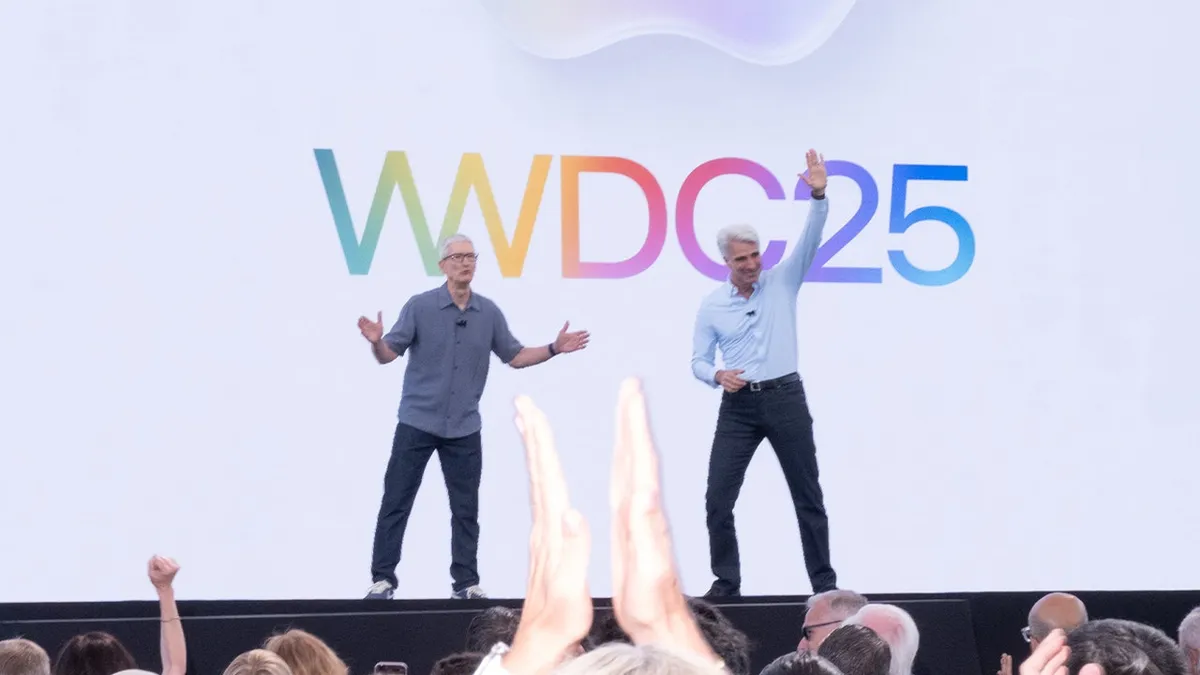
The 2025 edition of WWDC, or the Worldwide Developers Conference, is not just another tech event; it’s a melting pot of creativity and innovation. Thousands gather in an outdoor pavilion, filling wooden chairs with a diverse crowd of TikTokers, designers, and Apple employees. Among them are key figures like Alan Dye and Craig Federighi, who are pivotal in shaping Apple’s latest software update. This year’s conference is so eagerly awaited that programmers from across the globe had to enter a lottery for a chance to attend. The atmosphere is electric, reminiscent of the first day of college, where seasoned veterans mingle with newcomers, creating a lively tapestry of accents under the warm California sun.
Over the next few hours, Apple is set to unveil a plethora of new features, including the highly anticipated iOS 26. This update marks the most significant overhaul of the operating system since iOS 7 was introduced in 2013. The new naming convention reflects the year of release, signaling a bold shift in Apple’s approach. The palpable excitement among attendees resonates with the broader societal context: while Apple has long reigned supreme in hardware, the surge of artificial intelligence is reshaping the tech landscape, challenging even the stalwarts.
Despite expectations for a major AI announcement, Apple surprised many by introducing Liquid Glass, a striking new design that will be integrated across its devices, including iPhone, iPad, Apple Watch, and Apple TV. This innovative digital design system creates a translucent effect, allowing buttons and menus to reflect and refract the colors and images beneath them, reminiscent of gazing into a crystalline pond. Throughout the demonstrations, Apple staff encouraged attendees to engage with the new interface, emphasizing that the experience of Liquid Glass is best understood through interaction. As Dye pointed out, “It’s one of those projects where you really have to experience it to get it.”
The presentation felt like an explosion of creativity, with each new feature met with gasps of delight. As the event concluded, executives rushed off to meetings, while media representatives were ushered to briefings and developers attended workshops. Influencers like Emily Sundberg and Rachel Karten captured selfies with CEO Tim Cook, marking a moment of excitement and recognition. Amid the bustling chaos, I enjoyed a quick parfait from the cafeteria, observing the flurry of content creators setting up makeshift studios to report on the latest announcements.
After the main presentation, I had the opportunity to demo the new iOS 26. Apple employees guided me through features like beat-matching audio mixing, Intelligent Order Tracking, and a Call Screening tool that enhances privacy by requiring unknown callers to identify themselves. While some features, such as Spatial Scenes, felt less groundbreaking, others, like Live Translation, promise to be invaluable in bridging language barriers during interviews.
One of the standout moments of the conference was Apple’s announcement that it would be opening up its on-device AI framework, Foundation Models, to developers for free. This move allows third-party applications to integrate AI functionalities, demonstrating Apple’s intention to enhance user experience rather than compete in the crowded chatbot market. Dye and Federighi emphasized that the aim is to infuse joy into their interfaces, a theme that resonates throughout the new features, including customizable folders and group chat polls.
As I explored Apple’s campus, I felt a blend of nostalgia and curiosity about the future of technology. Alan Dye, the mind behind the Liquid Glass design, has a rich background in visual artistry, having previously worked for prestigious brands. His vision for the new interface seems to blend elements of past design philosophies while paving the way for future innovations like smart glasses and augmented reality. Dye’s insights reveal a commitment to creating a seamless digital experience, where software becomes an extension of reality rather than a barrier.
During my discussions with Dye and Federighi, it became clear that Apple fosters a unique creative environment. Their workspace resembles an art studio, filled with prototypes and vibrant posters to inspire innovation. The team’s focus is less about chasing social media metrics and more about cultivating a culture of creativity. With the development of Liquid Glass, Apple aims to create software that feels natural and intuitive, reflecting a future where technology blends seamlessly into everyday life.
As I prepared to leave the Apple campus, I noticed the sun setting, casting a golden hue over the WWDC badges worn by attendees. The line at the Apple Park Visitor Center’s store snaked around the street, a testament to the brand’s enduring appeal. Despite criticism surrounding the Liquid Glass update, it’s likely that this design will become as iconic as its predecessors. The evolution of iOS 26 signifies not just an upgrade but a fundamental shift in how we interact with technology, promising a future where our devices are more intuitive, engaging, and, above all, delightful.